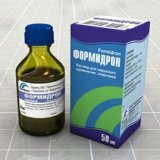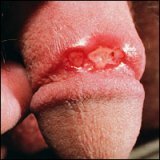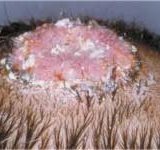Medical preparations for hyperhidrosis

The choice of a method of treatment of a hyperhidrosis depends on results of medical diagnostic inspection which is directed on revealing of the reasons of occurrence of the secondary form of a course of illness. It can be diseases of the cardiovascular, nervous and endocrine systems, as well as skin and infectious diseases. Rational and effective therapy of the disease with the secondary form of hyperhidrosis in the right combination with local treatment can contribute not only to weakening, but also to complete resolution.
Treatment of hyperhidrosis
Drug treatment of the primary form of the onset of hyperhidrosis links local and general therapy. Conduction of general treatment is often due to generalized hyperhidrosis or strongly pronounced local. In this case, the most effective drugs for hyperhidrosis, as:
- Psychotropic drugs( tranquilizers, sedatives and antipsychotics).Tranquilizers have a positive effect on hyperhidrosis, manifested in consequence of emotional disorders. In the case when hyperhidrosis is combined with a vegetative disorder, anaprilin, amitriptyline and clonazepam may be effective enough. Some of the sedatives have a beneficial effect, leading to a normal sweating. These include tinctures of valerian, bromide and motherwort. Also very impressive results were given by the appointment of a drug of neuroleptic effect of sonalax in its daily dose of up to 80 mg.
- Means affecting the neurotransmitter processes, peripheral in the main. In this group, the most effective are the drugs, which include atropine. The preparation of the protein, which can be used for a sufficiently long time, also applies to anticholinergics.
- Calcium channel blockers. From this group of drugs successfully used diltiazem for 60 mg orally three times a day. Vitamins B, E and A, rutin, and sage tincture are also shown for ingestion in half a cup twice a day.
It should be noted that in the conditions of a stable form of hyperhidrosis, drug treatment of general orientation is often ineffective.
Drugs for treatment.
Local topical medications are used primarily for localized hyperhidrosis. Such means are divided into antiperspirants and deodorants. Deodorants delay the process of decomposition of secretions of sweat glands and hide the smell due to the use of specially selected fragrance perfumes in the composition. Antiperspirants suppress partially the process of sweating due to coagulating action or insoluble compounds deposited on the walls of the ducts of the sweat glands. Now in deodorants often began to use substances( for the majority this is aluminum oxide), which also provide antiperspirant effect.
Dermatologists in treatment are inclined to use antiperspirant drugs for hyperhidrosis in patients. These include the salts of aluminum, lead, zinc, chromium, bismuth, as well as ethyl alcohol, salicylic acid and formaldehyde. The drugs containing the last from the list show the most effective action. Formaldehyde penetrates poorly through the skin, and its use is externally possible in other dosage forms without exerting toxic effects on the body.
Formalin is a solution with a formaldehyde content of about 35 percent. It is used for washing feet in the proportions: half a teaspoon for two glasses of water. For wiping, one-percent alcoholic solution of formalin can be used alone or in conjunction with other medicines. The most effective solution is that it is possible to use not only for immediate wiping, but also for soaking socks, which are subsequently worn 6-7 hours a day for four days.
Formidron is a liquid with 10 percent formaldehyde solution, 39.5 percent ethyl alcohol, 50 percent water, 0.5 percent perfume. Moistened in the preparation with a cotton swab rubs feet for 6 days, interrupting treatment every seventh day, up to four repetitions.
Paraformitonitic powder, consisting of 95 percent calcium bentonite and 5 percent polymerized formaldehyde, is used after washing feet with warm water. Rubbed between the fingers and into the area of the soles every day for 3-5 days in the morning.
Formagel is a fairly new drug, a gel that contains 3.7 percent formaldehyde. Methyl cellulose, used as a base, prevents evaporation of the active element of formaldehyde. In this gel, the inhibitory effect is achieved due to the coagulating effect on the apical cell part. Even a single application of formagel gives a persistent reduction in sweating and almost no significant side effects or complications. To properly apply the formaldehyde, it should be applied a thin layer on the problem areas of the skin after washing in warm water. Wait for the formation of a dry film and after 40 minutes remove it with water. After the procedure, the skin should remain dry. If the sweating is strongly pronounced, the procedure is repeated even up to 3 days. To avoid the development of dry skin, the drug is not recommended for a long time.
Also known are the facts of other combinations, when with hyperhidrosis medical non-traditional drugs are also widely used. Various powders containing acids and metal oxides, wiping solutions containing salicylic alcohol and vinegar, infusions of herbs, decoction from the bark of oak, solutions with a combination of permanganate were widely used.
In cases of psychogenic hyperhidrosis, psychotherapy is used. And with hyperhidrosis, not amenable to drug treatment, options for surgical treatment are possible.



